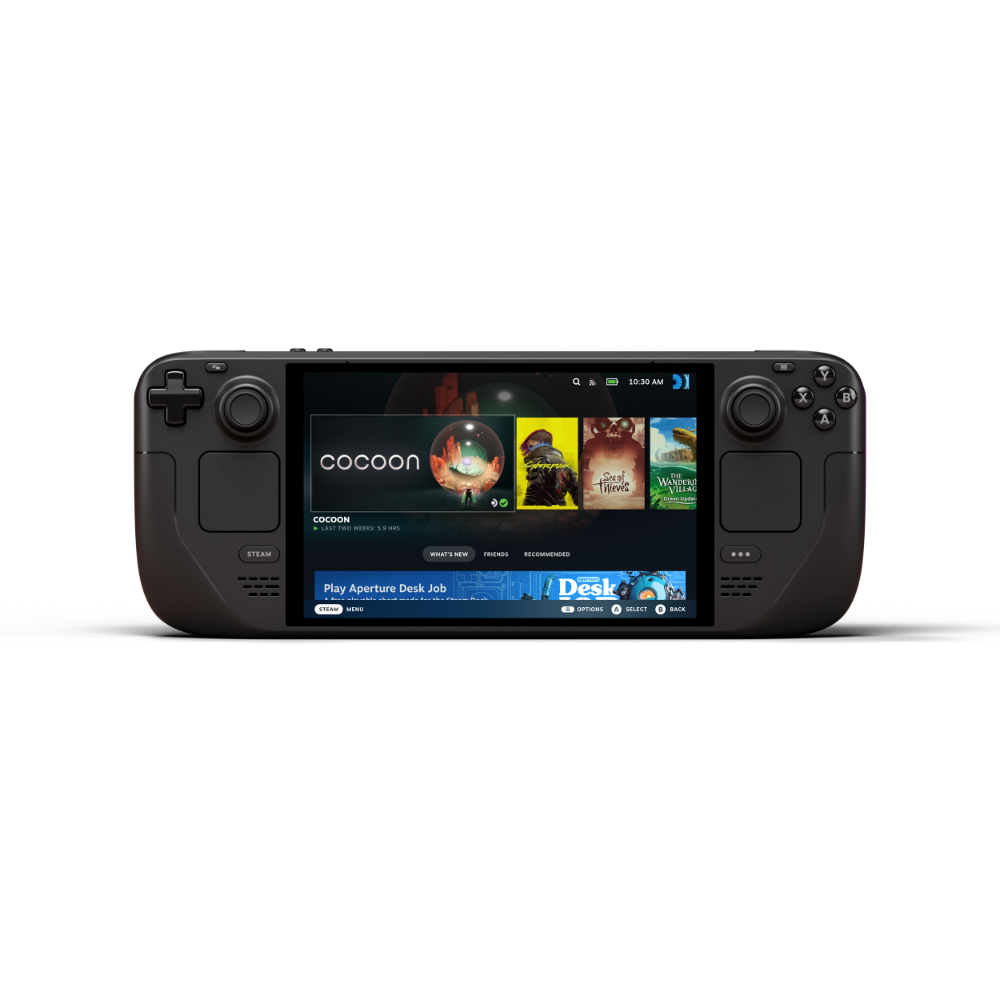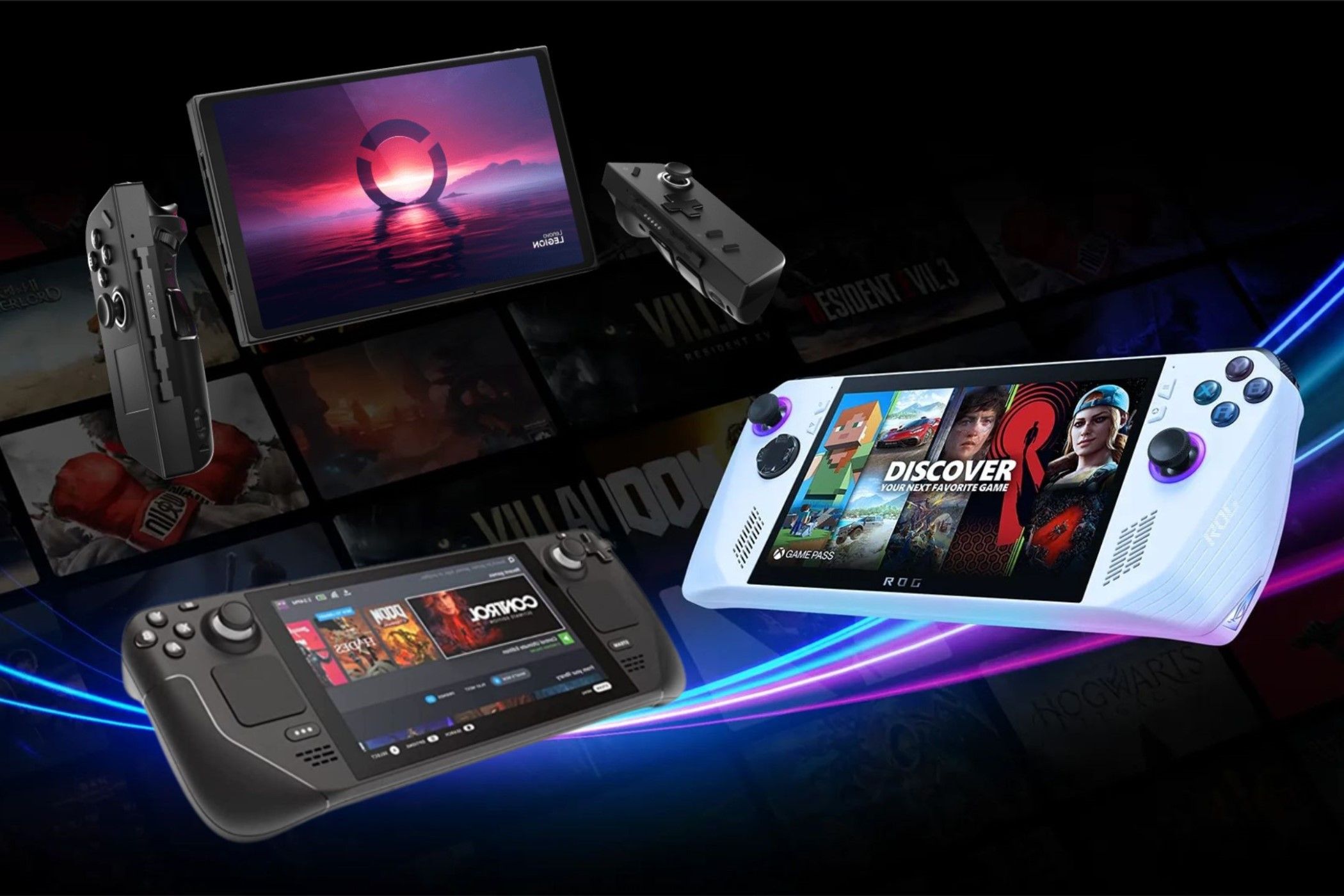Key Takeaways
- Upgrading from the Steam Deck LCD to the Steam Deck OLED could be worth it if you believe the upgrades you get with the OLED version justify the price.
- If you already own an ASUS ROG Ally or a Lenovo Legion Go, sidegrading to a Steam Deck OLED isn’t worth it. If you own a Nintendo Switch, upgrading to the Steam Deck OLED might be justifiable if you’re okay with the price and are ready to build your Steam game library from scratch.
- If you’re in the market for a Steam Deck and can afford the OLED version, the newer model is worth the price difference.
The Steam Deck OLED is a substantial upgrade over the original model, but if you already own another handheld, is the Steam Deck OLED worth replacing your current device with? And when choosing between the Steam Deck OLED and LCD, does the former justify the price difference? Let’s find out.
Steam Deck OLED vs. Steam Deck LCD
Let’s get one thing clear from the get-go: if you already own a Steam Deck LCD and the only thing that would make you replace it is better gaming performance, you shouldn’t upgrade. The new SKU does come with faster memory, but the upgrade amounts to just a few extra frames, tops, with many games running precisely the same on both models. In other words, the OLED version has practically the same gaming performance as the OG Steam Deck, and it isn’t worth upgrading to if all you care about is performance.
Conversely, if you can’t stand your Deck’s LCD screen because of its poor contrast, noticeable IPS glow, or poor color reproduction or are experiencing constant issues with download speeds or wireless performance in general, upgrading to the OLED version could be worth it.
The OLED screen is a massive improvement over the panel found on the original Deck. It’s got punchier colors, an immensely higher contrast ratio, and proper HDR support. It’s also noticeably brighter even when not playing HDR games, and the 90Hz refresh rate should make games capable of running at that frame rate feel far smoother.
The new Wi-Fi 6E chip is more stable than the Wi-Fi 5 solution found on the LCD version, with support for faster download speeds. Even if you don’t own a Wi-Fi 6 or Wi-Fi 6E router, you ought to notice the improved speeds when downloading games, if you have a fast enough internet plan. And if you’re into streaming games to your Deck, either locally from your PC or through game streaming services such as GeForce Now, the Steam Deck OLED offers a more stable game streaming experience than the LCD model.
Another point of contention many owners of the OG Deck have is the battery life. While the original Deck can give you about an hour and a half worth of juice at full power, the new version can last for just over two hours and ten minutes. Forty minutes of extra playing time might sound impressive to some, but if you’re someone who always plays their Deck while near a power outlet, longer battery life is likely not a reason enough to spend more cash and get the new and shiny handheld. On the other hand, gamers who primarily use their Deck while nowhere near a power outlet could find much more value in the improved battery, up to a point where an upgrade might be justifiable.
To summarize, if you already own a Steam Deck LCD and the improved performance is what you’re after, the Steam Deck OLED isn’t worth it. But if you don’t like the screen, face issues with wireless performance, or are disappointed with the battery life on the OG Deck, upgrading to the OLED might be worth it. Ultimately, it all boils down to whether the perceived value you see in the Deck OLED is enough to make you part with your hard-earned cash.
Steam Deck OLED vs. ASUS ROG Ally and Lenovo Legion Go
If you own an ASUS ROG Ally or a Legion Go, and the main reason why you went for one of the two big-brand handheld gaming PCs is their noticeably higher performance compared to Steam Deck, or the much better support for game launchers other than Steam, replacing your current handheld with a Steam Deck isn’t worth it.
As an ROG Ally owner myself, I’m in the same boat. And considering I’m someone who likes to buy DRM-free games on GOG even when the said game is available on Steam, who’s been using PC Game Pass from the day it launched, and who’s one of those elusive gamers who actually plays—and finishes, sometimes—Epic Games Store freebies, I can say that I find my ROG Ally much friendlier than my Steam Deck when it comes to installing and playing games from alternative game stores.
And despite my previous belief that I wouldn’t be able to use a trackpadless handheld gaming PC, the ease with which I can install and play any game I own had ultimately won me over and made me demote my Deck to an emulation machine, with my Ally becoming my primary handheld.
Even if you find Steam Deck’s gaming performance suitable for your needs, are okay with not being able to use PC Game Pass—you can install Windows on the Deck, but you’re losing so many SteamOS features that it’s not worth the hassle—and jumping through hoops to add games from other storefronts, the Ally’s and Legion Go’s screen quality and wireless performance is good enough to not warrant swapping them for a Steam Deck OLED.
On the other hand, if you find the battery life too poor for your needs, which can be especially jarring on the ROG Ally, considering the thing cannot even offer a full hour of game time at max power, maybe, just maybe, sidegrading to the Steam Deck OLED could work for you. As always, the final decision is up to you, but if you want my opinion, longer battery life alone wouldn’t make me swap my Ally for a Steam Deck OLED.
Those deciding between getting a Steam Deck and a ROG Ally should read our in-depth comparison between the two that ought to help them choose the right handheld for their needs.
Steam Deck OLED vs. Switch OLED vs. Switch Lite
If you own a regular Nintendo Switch, Switch OLED or a Switch Lite, and you’re used to the straightforward, hassle-free console experience the said Nintendo consoles offer, getting a Steam Deck might be worth it if you’re ready to pay the price of admission.
Steam features virtually every indie game available on the Switch, but double-dipping can get really expensive, really fast. That said, upgrading to Steam Deck OLED could be well worth it if you’re fine with using your Switch to play the games you already own while building your Steam Deck library from scratch. Not only because you can often buy games on Steam for less than on the Nintendo eShop, but also because Steam sells a plethora of PC games not available on Switch. While the Steam Deck isn’t the best choice for playing the latest and greatest AAA games, the device has more than enough oomph to provide a fantastic game experience in most older AAA titles, almost none of which you can play on Switch.
If you bought a Switch to play Nintendo exclusives, upgrading to the Deck OLED probably isn’t worth it. While the Deck is technically capable of emulating every Switch game that runs fine on Yuzu and Ryujinx, many titles—such as Tears of the Kingdom, Kirby and the Forgotten Land, Xenoblade Chronicles 3, etc—perform quite poorly on the Deck. They’re not good enough to get a comparable or better gaming experience than on your Switch.
Prospective Steam Deck Buyers: Should You Get the Steam Deck OLED?
Lastly, if you’re one of the prospective Steam Deck buyers mulling over whether to get the 256GB LCD version or go for one of the two OLED variants, it all comes down to your budget. If you can stretch your budget to $550, get the OLED; the sheer number of upgrades you’re getting is worth the price difference.

Steam Deck OLED
The Steam Deck OLED is a clear improvement over Valve’s original handheld console, with a larger battery, more storage, faster Wi-Fi, and more. Not to forget the bigger and better-looking OLED screen that gives the device its name.
If you cannot excuse spending $150 extra, the Steam Deck LCD is still an excellent handheld gaming PC that is worth getting even though it’s got a fancier, but also pricier, successor. After all, the most essential features, such as gaming performance, ergonomics, and software experience are the same on both devices.
source
